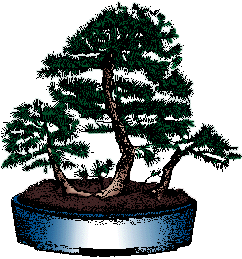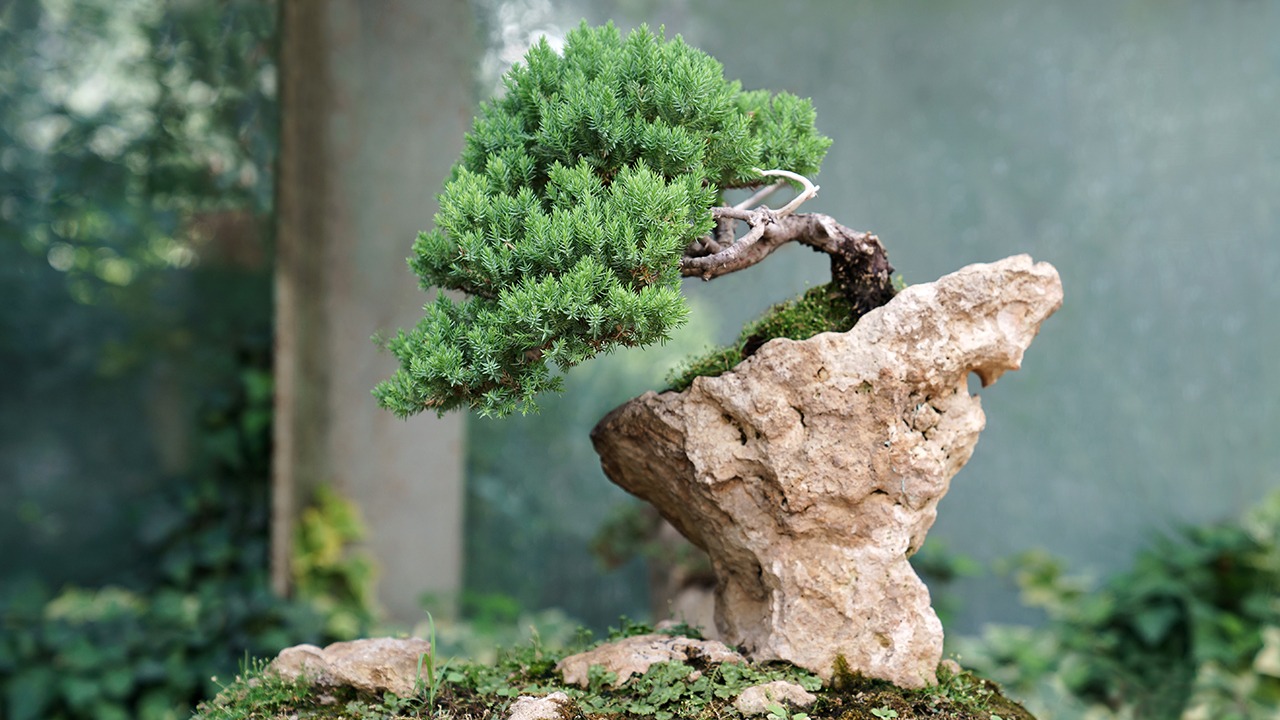The term “bonsai” means “planted in a container” in Japanese. It refers to the art of growing miniature trees.
Bonsai is an ancient horticultural practice that originated in China and was later refined in Japan. This art form involves cultivating small trees that mimic the shape and scale of full-sized trees. Bonsai trees are not genetically dwarfed plants but are kept small through meticulous pruning and training.
Enthusiasts appreciate bonsai for its aesthetic appeal and the patience and skill required to maintain it. Bonsai trees are often displayed in homes and gardens as living works of art, representing harmony, balance, and tranquility. This practice has gained worldwide popularity, with many people enjoying the therapeutic and artistic aspects of bonsai cultivation.
Introduction To Bonsai
Bonsai is the art of growing miniature trees. These trees look like full-sized trees. They are kept small through pruning and training. Bonsai is more than gardening. It is a blend of art and nature.
Origins
Bonsai originated in China. It started over a thousand years ago. The Chinese called it “penjing”. The Japanese adopted this art form. They named it “bonsai”. In Japanese, “bon” means tray and “sai” means planting. So, bonsai translates to “planting in a tray”.
Cultural Significance
Bonsai has deep cultural roots. It represents harmony and balance. It teaches patience and discipline. In Japan, it is a symbol of peace. Bonsai trees are often given as gifts. They are believed to bring good luck.
Historical Background
The term Bonsai has deep historical roots, originating from ancient horticultural practices. This art form symbolizes harmony and balance, reflecting the cultural heritage of the regions it evolved from. Understanding the historical context of bonsai helps appreciate its significance and beauty.
Ancient Practices
The practice of cultivating miniature trees began in China over a thousand years ago. This ancient art, known as penjing, involved growing trees in containers and shaping them to resemble natural landscapes. Chinese monks later introduced penjing to Japan, where it evolved into bonsai.
Bonsai in Japan became an integral part of Zen Buddhism. Monks used it as a form of meditation and spiritual reflection. The meticulous care and attention required for bonsai creation mirrored the monks’ dedication to their spiritual practices.
Evolution Through Time
Bonsai art continued to evolve over centuries, influenced by various cultural and artistic movements. During the Kamakura period in Japan, bonsai became popular among the samurai class. They appreciated the trees’ beauty and symbolism of strength and resilience.
In the Edo period, bonsai was no longer exclusive to the elite. Common people began practicing bonsai, and it became a widespread hobby. Bonsai exhibitions started appearing, showcasing the diverse styles and techniques developed by enthusiasts.
Modern bonsai has incorporated influences from Western horticulture, blending traditional techniques with contemporary styles. Today, bonsai is a global phenomenon, with enthusiasts from all over the world participating in this timeless art form.
| Period | Significance |
|---|---|
| Ancient China | Originated as penjing, early miniature landscapes |
| Kamakura Period | Adopted by samurai, symbolized strength |
| Edo Period | Became popular among common people |
| Modern Era | Global phenomenon, blending traditional and contemporary styles |
- Bonsai originated from ancient Chinese penjing.
- Introduced to Japan by Chinese monks.
- Became part of Zen Buddhism and samurai culture.
- Widespread practice in the Edo period.
- Modern bonsai blends traditional and contemporary styles.
Philosophy Behind Bonsai
The term Bonsai means “planted in a container.” The philosophy behind bonsai is deep and meaningful. It combines art and science to create miniature trees. These trees reflect the beauty of nature. Bonsai is not just about growing small trees. It is about understanding life and nature’s balance.
Art And Science
Bonsai is both an art and a science. The art part involves shaping the tree. This requires creativity and vision. The science part involves understanding plant growth. This requires knowledge and skill.
Artists use wires to shape the branches. They trim the leaves carefully. The goal is to create a beautiful, balanced tree. Scientists study how the tree grows. They ensure the tree stays healthy.
| Aspect | Art | Science |
|---|---|---|
| Shaping | Using wires | Understanding growth |
| Trimming | Creating balance | Ensuring health |
Symbolism
Bonsai trees have deep symbolism. They represent harmony, peace, and balance. Many people see bonsai as a way to connect with nature. Each tree tells a story. The shape and form of the tree symbolize life’s journey.
Bonsai also teaches patience. Growing a bonsai tree takes many years. It is a lifelong commitment. The tree grows slowly, just like our journey in life. This teaches us to appreciate each moment.
- Harmony
- Peace
- Balance
- Patience
- Life’s journey
Types Of Bonsai Trees
Bonsai trees come in many shapes and sizes. They can be common species or rare varieties. Let’s explore some popular types of bonsai trees.
Common Species
Common species are widely available and beginner-friendly. Here are some popular choices:
- Ficus Bonsai: Ficus is a great choice for beginners. It is hardy and easy to care for.
- Juniper Bonsai: Juniper trees are popular due to their lush foliage. They are also quite forgiving.
- Chinese Elm Bonsai: This tree is known for its small leaves and elegant shape. It can thrive indoors and outdoors.
- Japanese Maple Bonsai: Japanese Maples are loved for their beautiful leaves. They change color with the seasons.
Rare Varieties
Rare varieties are less common and often more challenging to grow. Here are some intriguing options:
- Yamadori Bonsai: These are wild trees collected from nature. They have unique shapes and histories.
- Shimpaku Juniper: This variety is prized for its twisted trunks and dense foliage. It is a favorite among bonsai enthusiasts.
- Azalea Bonsai: Azaleas are known for their vibrant flowers. They require specific care to bloom beautifully.
- Black Pine Bonsai: This tree is admired for its rugged appearance. It symbolizes strength and resilience.
Bonsai Techniques
Creating a bonsai tree requires skill and patience. The art involves specific techniques. These techniques ensure the tree’s health and beauty. Let’s explore the main bonsai techniques.
Pruning And Wiring
Pruning is the method of trimming branches and leaves. It shapes the bonsai tree. Regular pruning keeps the tree small and beautiful. Use sharp, clean tools for precise cuts.
Wiring involves wrapping wire around branches. This guides their growth direction. Use aluminum or copper wire. Wrap gently to avoid damaging the bark. Check the wires regularly to prevent scarring.
Potting And Repotting
Potting is placing the tree in a container. Choose a pot that complements the tree. Ensure it has drainage holes. Proper potting supports root health.
Repotting is moving the tree to a new pot. This is crucial every 1-3 years. It provides fresh soil and space for roots to grow. Trim the roots during repotting to keep the tree healthy.

Credit: www.merriam-webster.com
Caring For Bonsai
Caring for a bonsai tree is a rewarding experience. These miniature trees need special care to thrive. Understanding their needs ensures they remain healthy and beautiful.
Watering
Proper watering is crucial for bonsai trees. They require consistent moisture but must not be waterlogged. Check the soil daily to ensure it is neither too dry nor too wet.
- Check soil moisture daily.
- Water thoroughly until water drains from the pot’s bottom.
- Avoid letting the soil dry completely.
- Use a watering can with a fine nozzle for even distribution.
Fertilizing
Bonsai trees need nutrients to grow healthy. Use a balanced fertilizer suitable for bonsai. Fertilize during the growing season, typically from spring to fall.
- Select the right fertilizer for bonsai trees.
- Apply fertilizer every two weeks during the growing season.
- Reduce frequency in winter to once a month or stop.
- Avoid over-fertilizing to prevent root burn.
Follow these steps, and your bonsai will flourish beautifully.
Bonsai Styles
Bonsai trees come in various styles. Each style has its charm. Knowing these styles helps in appreciating bonsai art. Let’s dive into two popular styles: Formal Upright and Informal Upright.
Formal Upright
The Formal Upright style is also known as Chokkan. This style mimics a tall tree in nature. The trunk is straight and strong. Branches are evenly spaced.
Creating a Formal Upright bonsai requires patience. The tree must grow vertically. The trunk should have a taper from base to top. This gives a natural look.
Here are some key points for Formal Upright bonsai:
- Trunk: Straight and vertical
- Branches: Evenly spaced
- Roots: Visible and balanced
Informal Upright
The Informal Upright style is known as Moyogi. This style represents a tree that has faced the elements. The trunk has gentle curves. It is not straight like Formal Upright.
Informal Upright bonsai trees have a natural look. The curves in the trunk make it interesting. Each curve should be balanced. This style is more flexible.
Key features of Informal Upright bonsai include:
- Trunk: Gently curved
- Branches: Naturally spaced
- Appearance: Balanced and natural

Credit: bonsai2u.co.uk
Modern Bonsai Culture
The world of bonsai has evolved over the years. The modern bonsai culture brings together tradition and innovation. Today, bonsai artists and enthusiasts share their works globally. This cultural exchange has enriched the art form.
Global Influence
Bonsai has spread far beyond its Japanese origins. People worldwide now embrace this ancient art. Social media platforms showcase bonsai from different countries. This global exposure has increased interest and appreciation.
- Japan: Still the heart of bonsai culture.
- United States: Home to many bonsai clubs and exhibitions.
- Europe: Growing interest in bonsai art.
- Asia: Countries like China and Korea also have rich bonsai traditions.
These regions contribute unique styles and techniques. This diversity enriches the global bonsai community.
Contemporary Trends
Modern bonsai trends reflect a mix of tradition and innovation. Artists experiment with new styles and species. They push the boundaries of what bonsai can be.
- Naturalistic Style: Mimics nature closely.
- Urban Bonsai: Suitable for small apartments.
- Indoor Bonsai: Thrives indoors with proper care.
- Mini Bonsai: Tiny trees with intricate details.
These trends make bonsai accessible to more people. They also bring fresh perspectives to the art.
| Trend | Description |
|---|---|
| Naturalistic Style | Mimics natural tree shapes closely. |
| Urban Bonsai | Designed for small living spaces. |
| Indoor Bonsai | Grows well indoors with care. |
| Mini Bonsai | Very small trees with detailed design. |
The art of bonsai continues to evolve. The blend of tradition and modern trends keeps it vibrant.

Credit: www.gardenamerica.com
Conclusion
Understanding the term Bonsai reveals the artistry behind these miniature trees. It’s a blend of nature and human creativity. Cultivating Bonsai promotes patience, care, and tranquility. Embrace this ancient practice to bring a piece of nature into your home. Discover the joy of nurturing your own Bonsai masterpiece.

